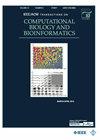基于屏蔽图自动编码器的潜在 miRNA 与疾病关联预测
IF 3.4
3区 生物学
Q2 BIOCHEMICAL RESEARCH METHODS
IEEE/ACM Transactions on Computational Biology and Bioinformatics
Pub Date : 2024-07-02
DOI:10.1109/TCBB.2024.3421924
引用次数: 0
摘要
生物医学证据表明,微RNA(miRNA)失调与复杂的人类疾病有关,确定miRNA与疾病的关系有助于疾病的早期检测和预防。传统的生物学实验方法具有成本高、效率低的缺点,而计算方法可以很好地弥补这些缺点。然而,许多计算方法都存在过度关注邻接关系、忽视图的结构信息、轻视图结构冗余信息等难题。本研究提出了一种基于图屏蔽自动编码器的计算模型,命名为 MGAEMDA。MGAEMDA 是一个非对称框架,其中编码器将部分观察到的图映射为潜在表示。解码器根据边缘和节点水平重建被掩蔽的结构信息,并将其与线性矩阵相结合,从而得到结果。在两个数据集上的实证结果表明,MGAEMDA 模型的性能优于同类模型。我们还利用四种疾病的案例研究证明了MGAEMDA的预测性能,所有预测的前30个miRNA都在数据库中得到了验证,进一步证明了该模型的卓越性能。本文章由计算机程序翻译,如有差异,请以英文原文为准。
Prediction of Potential miRNA-Disease Associations Based on a Masked Graph Autoencoder
Biomedical evidence has demonstrated the relevance of microRNA (miRNA) dysregulation in complex human diseases, and determining the relationship between miRNAs and diseases can aid in the early detection and prevention of diseases. Traditional biological experimental methods have the disadvantages of high cost and low efficiency, which are well compensated by computational methods. However, many computational methods have the challenge of excessively focusing on the neighbor relationship, ignoring the structural information of the graph, and belittling the redundant information of the graph structure. This study proposed a computational model based on a graph-masking autoencoder named MGAEMDA. MGAEMDA is an asymmetric framework in which the encoder maps partially observed graphs into latent representations. The decoder reconstructs the masked structural information based on the edge and node levels and combines it with linear matrices to obtain the result. The empirical results on the two datasets reveal that the MGAEMDA model performs better than its counterparts. We also demonstrated the predictive performance of MGAEMDA using a case study of four diseases, and all the top 30 predicted miRNAs were validated in the database, providing further evidence of the excellent performance of the model.
求助全文
通过发布文献求助,成功后即可免费获取论文全文。
去求助
来源期刊
CiteScore
7.50
自引率
6.70%
发文量
479
审稿时长
3 months
期刊介绍:
IEEE/ACM Transactions on Computational Biology and Bioinformatics emphasizes the algorithmic, mathematical, statistical and computational methods that are central in bioinformatics and computational biology; the development and testing of effective computer programs in bioinformatics; the development of biological databases; and important biological results that are obtained from the use of these methods, programs and databases; the emerging field of Systems Biology, where many forms of data are used to create a computer-based model of a complex biological system

 求助内容:
求助内容: 应助结果提醒方式:
应助结果提醒方式:


